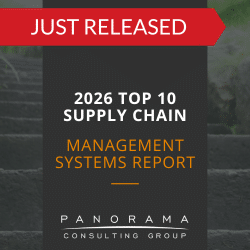When it comes to ERP systems, the word “customization” is one of the most dreaded terms that an executive hears. In fact, I would estimate that at least 90-percent of Panorama’s ERP selection clients indicate a strong preference for zero or no customization. In other words, most CIOs and CFOs want to use the system out of the box without making any changes to the software code. While every ERP implementation requires some amount of configuration and personalization, most executives won’t approve heavy-duty changes to the software.
However, something strange happens during implementation. Inevitably, the business identifies one or more things that the software doesn’t do quite right, so they request to make just one minor change to the way the software is designed. Of course, this is a slippery slope, and one minor change to the software code typically leads to several more.
There are both pros and cons of software customization. First, the disadvantages:
Upgrades become more complex, costly and risky. Every change made to ERP software makes upgrades that much more complicated and costly. We work with a large number of organizations that have stopped upgrading and maintaining their ERP systems because customizations have made the upgrade paths too cumbersome and costly. In fact, over-customization a key reason why so many organizations decide to replace their existing ERP systems – not because there is something wrong with the system per se, but because it has been customized beyond the point of recognition.
Customization may be a symptom of organizational change management issues. Often times, it isn’t the customization itself that is the problem. Customization may be a symptom of refusing to adopt new business processes and software functionality. This could suggest that the organization may need to invest more heavily in organizational change management to help stakeholders and employees adapt to new processes.
Despite these disadvantages, there are advantages to software customization as well. For example:
We live in a customizable world. Employees are accustomed to customization, whether it’s how they customize their Facebook profiles, create personalized radio stations on Pandora or order individualized products from their favorite companies. The new generation of younger employees is especially accustomed to flexible technologies. A completely uniform and generic approach to business processes is a hard adjustment for most employees. To minimize these change management costs, many organizations opt for software customization.
Organizations have competitive advantages to protect. The concept of off-the-shelf ERP software assumes that an implementing organization has no competitive advantage. If every organization could use generic, non-customized ERP software, then any organization could replicate the competitive advantages of competitors simply by implementing the same ERP system. If an organization wants sustainable competitive advantage, it has to be something that can’t be replicated on a large scale with generic ERP systems; otherwise it wouldn’t be a competitive advantage.
So what’s the right answer? Unfortunately, there isn’t one. Every organization is different and will find its own sweet spot on the spectrum of customization. The right answer for your organization most likely depends on how unique your organization is, how established your business processes are and how open to change you are. Keep in mind that customization has its risks, but reducing customization puts more pressure on your team to manage change resistance. The key is to find the right balance.














